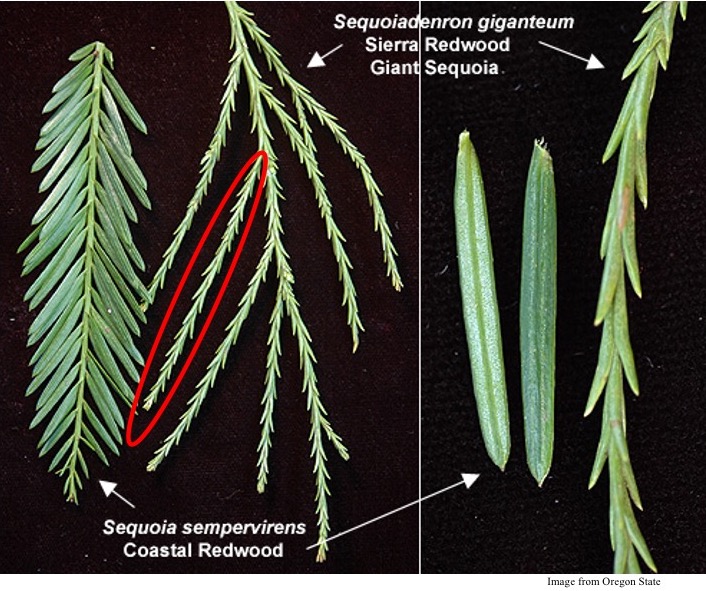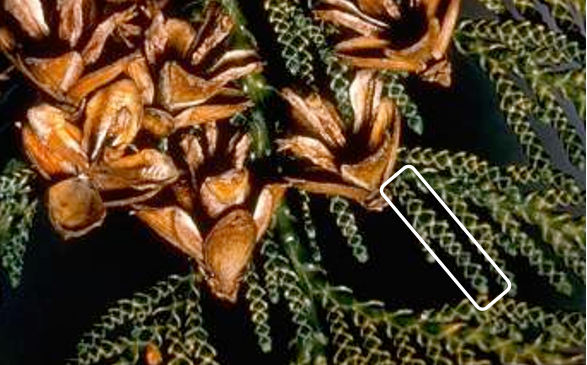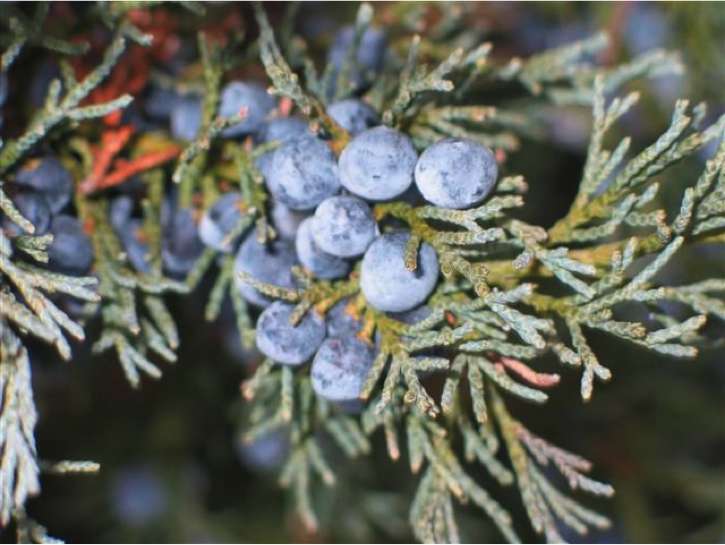The Cupressaceae
In the Cupressaceae
- Leaves are persistent, often scale-like, cloaking branches
- (Leaves may be opposite, whorled, or alternate)
- Pollen sacs sessile on underside of staminate cone
Genera that are included in the Cupressaceae include:
- Calocedrus (incense cedar)
- Cupressus (cypress)
- Juniperus (juniper)
- Thuja (arborvitae or western red cedar)
Also (formerly put into their own family, the Taxodiaceae):
- Sequoia (Giant sequoia)
- Sequoiadendron (coast redwood)
The first four genera listed have opposite or whorled leaves.
The last two (Sequoia and Sequoiadendron) have alternate leaves:

Check your understanding:
Below is an image of a branch of Thuja.

Here is another plant in the Cupressaceae. (Its leaves cloak the branch.)

Below is a magnification of a juniper branch (genus, Juniperus). You can see an oil gland on the back of each leaf.

Most members of the Cupressaceae have woody cones. However, some (notably, junipers) have fleshy cone scales. We tend to call these cones "juniper berries", even though they are not technically fruits. (Remember: in botanical terms, a berry is a fruit in which all layers of the ovary wall are fleshy at maturity - and junipers don't have ovaries.)
